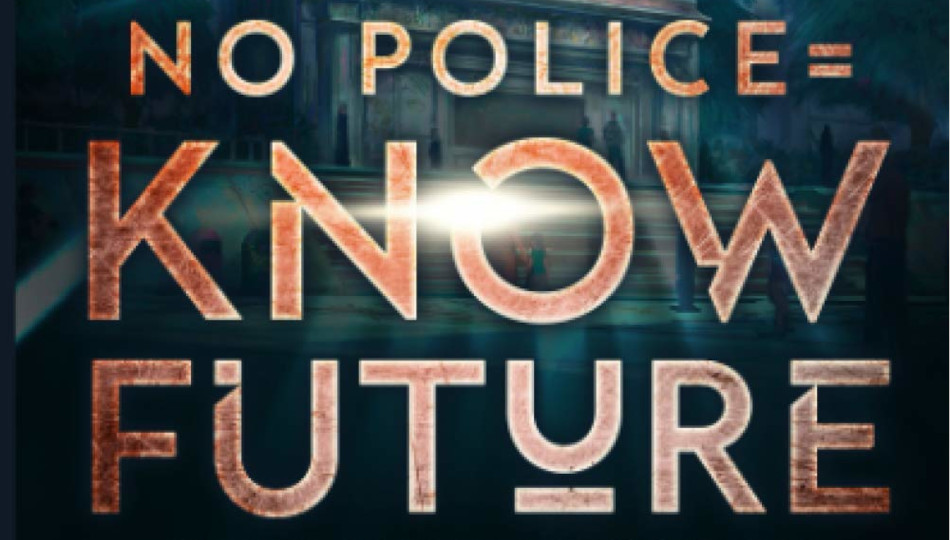
I have to say this again: when I review a book (or a movie or whatever), what I give here is my opinion only. I have no agenda, and whether I get the subject for free as a review copy or have to buy it, I am beholden to nobody (so far—I probably can be bought, but as of yet, nobody’s offered). My opinion, though informed, is as subjective as anyone’s—I am neither Siskell nor Ebert and, though I’ve seen many hundreds of movies and read many more hundreds of books, I am not a judge, critic or self-styled “expert.” If I don’t like something—except under extreme circumstances—I simply won’t review it. I’m not here to give anyone “killer” reviews; as a writer myself, I won’t rain on anyone’s parade if I can help it. I feel that most artists (and that includes anyone who’s creating something, whether for love or money) are sincere in their attempt to create a worthwhile work, as I am. I can be snarky, and/or cynical, but I try to be fair in my reviews. (Unless I just can’t.)
Now that that’s out of the way, look at Figure 1—this swashbuckling dude is Sebastien de Castell, author of many books, including the one I’m reviewing here, Crucible of Chaos: A Novel of the Court of Shadows (which, I find, is #5 in a quartet of books in a series, the “Greatcoat” series.) Well, first off, the guy looks like a poseur, and that name is obviously fake, right? Well, shoot, apparently—according to his website (click for link), it’s his real name. And he’s a Canadian/Vancouver writer (currently living in The Hague, maybe). So Figure 1 tells me he works out probably at Vancouver’s Academie Duello, where one can learn swordplay and other useful things (click for link).
I was sent Crucible of Chaos as a review book and, as is my usual custom, passed it by after a quick scan to review the accompanying SF book—I read both SF and Fantasy, but my preference in reading is 1) SF; 2) Fantasy; 3) anything else. My scan revealed a British publisher and what appeared to be a very wordy volume. I was tempted to toss it aside and not read it further, but that would have been a big mistake. Because this is really good fantasy without an elf or fairy (or even faery) in sight. There are gods and demons, for sure, but I didn’t find that out till later in the book. As a matter of fact, the more I read, the more I liked it. This is a fine book and, though it’s fifth in de Castell’s “Greatcoat” series, it stands and can be read alone. (But it engendered in me a desire to read the previous four books. If you read it, I suspect you’ll fall prey to the same desire.)

The book concerns a King’s Magistrate, one Estevar Valejan Duerisi Borros, a Magistrate who investigates supposed instances of witchcraft, magic, deviltry, etc., and is so good at it he’s called the King’s Crucible. He’s one of the touring Magistrates called “Greatcoats,” because of the (duh) greatcoats they wear, which are all bulwarked by sewn-in plaques of bone as a kind of shielding from sword and rapier thrusts by opponents in judicial duels. Yes, in this mileu, the Magistrate can (or must, I dunno) provoke or accept a duel to ascertain the victor in a court case, even an accusation of murder. In this case, the accused had cheated after Borros had won with first blood, and had inflicted a grievous wound on the Magistrate who had arrogantly assumed he could beat any “local yokel” with an epée. The local lordling had overridden the King’s justice and the murderer went unpunished. Estevar Borros has ridden away—to his next gig at the Abbey on Isola Sombros (the Isle of Shadows) to investigate another supposed supernatural occurrence at the request of the Abbot. He’s riding his purchased mule, Imperious, slowly, because of the seven-inch wound in his side, probably infected now, given him at the latest duel.
One of the attractions of this book is that the protagonist is not a young, handsome, super-competent hero; he’s an overweight, aging, wounded agent of his King who’s beginning to suffer physically and mentally from his infected sword cut. And yes, de Castell is rather wordy, but the style of the book kind of demands it. I don’t want to tell you much more, as I’d like you to have the same enjoyment as I had when reading it. Estevar encounters risen corpses, supernatural events—even though he’s a supernatural debunker—and a young woman who becomes his aide. The milieu feeling is seventeenth or eighteenth century Europe (Spain or Portugal), with magic added. I very much enjoyed Estevar’s attempts to rationalize supernatural events that he hears of or observes. And his ability to continue doing his job while weakened by fever and against the wishes of those around him.
This book, which I highly recommend to fantasy readers—and SF readers with an open mind—is available from Amazon.ca (and, I assume Amazon.com) for $15.99 on Kindle or $35 print. Don’t get the one by J. Scott Nelson or any of the several books with Crucible and/or Chaos in the title, including Crucible Out of Chaos. I’m sure they’re fine books on their own, but they’re not this one.

When I was much younger, I encountered the works of Abraham Merritt, who was a big name in fantasy in the 1920s and 1930s. The first book I read was Seven Footprints to Satan (1928) (Figure 3), which was made into a movie—which I’ve been unable to find online. I read all the Merritt that was to be found in the Everett Public Library (Everett, WA), including The Face in the Abyss (Figure 4), which is one of the “lost race” books beloved of a small clique of readers (of which I guess I’m one). Seven Footprints, like the other book, suffers somewhat from outdated cultural references (as my TV’s Western channel keeps saying) and extremely descriptive but rather charming passages. The book, published close to a hundred years ago, is about a man, an explorer, abducted by someone who says—and perhaps believes—that he is actually the human avatar of The Fallen One of Christian myth; he controls a large number of people worldwide by offering them the essential keys to his kingdom through a gamble, in which they step on the representation of Buddha’s “seven footprints” and win—or lose their souls or their service to the self-styled Lord of Darkness. I found it—and still find it—charming, if more than a bit far-fetched even for the late ‘20s. I don’t believe this (or the following book) is available on Project Gutenberg, but I’m sure I found it on some free site online.

Another Merritt book I liked, partly because there are so few unexplored places in the world today, was Merritt’s The Face in The Abyss (Figure 4). It is, as I said before, a “lost race,” as I believe it’s called, book. An explorer (usually in some place like Africa or South America—in this case, I think it’s either Central or South America) finds a hidden “lost” civilization of (usually) “white” people living amongst primitive natives of some kind—usually the kind of people that white people have traditionally subjugated—and the protagonist falls in love with a beautiful princess, destroys the hidden civilization (which is often superior to the outside world’s) and escapes with the princess and some jewels or suchlike. This book is no exception. Merritt is known for several other books, such as Burn, Witch, Burn and The Moon Pool; the latter can be found on project Gutenberg. Give him a try; you might like him.
If you’d like to comment on this column, you can comment here or on Facebook, or even by email (stevefah at hotmail dot com). All comments are welcome as long as they’re reasonably polite.) My opinion is, as always, my own, and doesn’t necessarily reflect the views of Amazing Stories or its owner, editor, publisher or other columnists. See you next time!










